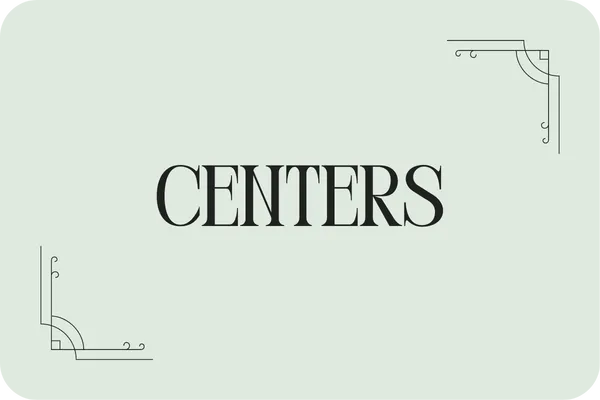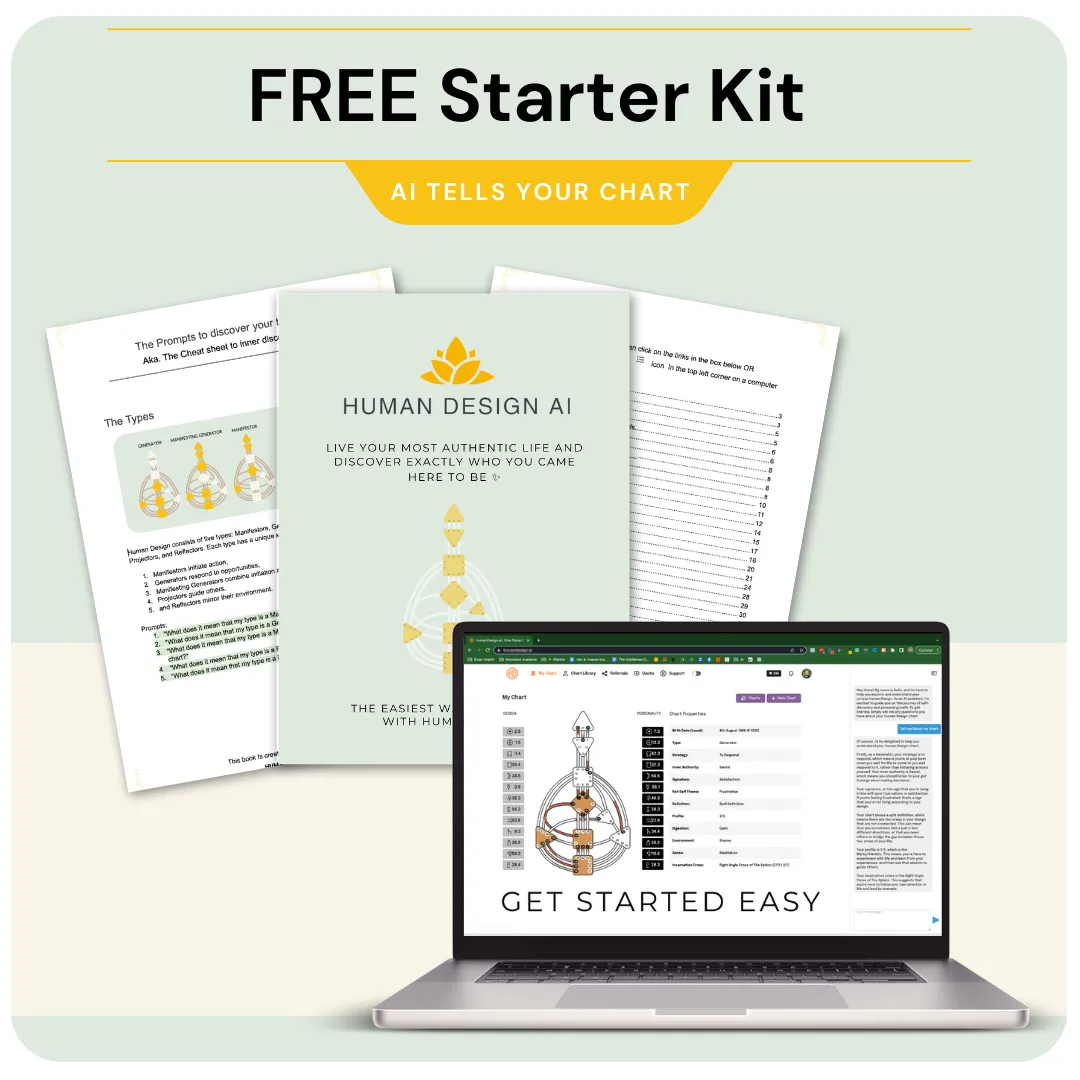
The Human Design Blog ✨
I wanna read about...

Beginners Guide to Human Design - Centers
“Centers are like the organs of our energetic body, each one performing a unique function.” - Ra Uru Hu
Table of Contents
A Beginner's Guide to Human Design: Understanding the Centers
Introduction to the Centers in Human Design
Ajna Center
Throat Center
G Center
Heart Center
Sacral Center
Solar Plexus Center
Splenic Center
Root Center
Embracing the Power of Your Centers
Conclusion
FAQs

A Beginner's Guide to Human Design: Understanding the Centers
Human Design, a system that blends astrology, the I Ching, Kabbalah, the Chakra system, and quantum physics, offers profound insights into our personality and life's purpose. At the heart of this system are the nine Centers, each signifying a unique aspect of our being. These Centers, some of which may be defined (colored) and some undefined (white) in your personal Human Design chart, help us understand how we process and interact with the world.
Introduction to the Centers in Human Design
In Human Design, the Centers act like energy hubs, each having a specific function. Whether a Center is defined or undefined in your chart has a significant impact on your traits and behaviors. Let's embark on a journey through each of the nine Centers to understand their meanings and implications for our lives.
Ajna Center
The Ajna Center is the hub of mental activity, where thoughts are processed and concepts are created. When defined, the Ajna Center gives you a consistent way of processing information and forming beliefs and opinions. You are sure of your mental processes and tend to trust your perceptions and judgments.
However, when undefined, the Ajna Center can make you uncertain of your thoughts, leading to overthinking. But this also offers you a unique gift: the capacity to understand multiple viewpoints and absorb new ideas, giving you a flexible and open mind.
Throat Center
The Throat Center, often referred to as the center of manifestation, is where our thoughts and feelings are transformed into words and actions. If your Throat Center is defined, you can consistently articulate your thoughts and express yourself, having a certain strength and reliability in your communication.
If it's undefined, you might sometimes struggle to express yourself or feel unheard. Yet, this undefined Center can make you a keen listener, picking up on subtleties in others' communications that may be overlooked by others.
G Center
The G Center, also known as the Identity Center, holds the essence of who you are - your identity, direction, and capacity for love. When defined, you have a strong sense of self and direction in life. Your identity and path seem clear, and you possess an inherent self-love that grounds you.
An undefined G Center might cause a feeling of inconsistency in your identity and life's direction. But this also gives you the flexibility to adapt, reinvent yourself, and embrace different experiences that life offers.
Heart Center
The Heart Center, also called the Will or Ego Center, is the home of willpower, value, and ego. It is where you derive self-worth and make promises. If this center is defined in your chart, you have consistent access to willpower and a sense of your value, which can make you reliable and trustworthy.
With an undefined Heart Center, you might struggle with self-esteem and tend to overcommit. But you also have the potential to develop a healthy detachment from materialistic desires and societal definitions of worth, leading to a deeper sense of self-value.
Sacral Center
The Sacral Center is the powerhouse of life force and work capacity. It symbolizes our energy for work, sexuality, and creativity. If your Sacral Center is defined, you are a Generator or a Manifesting Generator type with sustainable energy levels and a good sense of when to stop.
When the Sacral Center is undefined, you may experience energy inconsistency and find it hard to know when to stop. Yet, this can also lead to developing a keen awareness of your energy cycles, making you more attuned to balance work and rest.
Solar Plexus Center
The Solar Plexus Center is the center of emotions, desires, and moods. Here, you process feelings and gain emotional clarity. If this center is defined, you have a consistent emotional wave and a depth of emotions that can make you profoundly aware of your feelings.
On the other hand, an undefined Solar Plexus Center can make you an empath, absorbing and amplifying others' emotions. This sensitivity can lead you to develop deep empathy and understanding for others.
Splenic Center
The Splenic Center is linked to intuition, health, and well-being. It is where you experience instinctual 'gut' feelings. When this Center is defined, you have a reliable intuition and an inherent awareness of what is healthy and safe for you.
If it's undefined, you might struggle with fear and anxiety and find it challenging to know what is good for your well-being. Yet, you may also become adept at noticing subtle shifts in your body and environment, enhancing your attunement to your well-being.
Root Center
The Root Center is the center of adrenaline, stress, and pressure. It drives us to progress and pushes us to act. When defined, you handle pressure well and can use it as a catalyst for growth and accomplishment.
An undefined Root Center, however, can make you susceptible to feeling overwhelmed by stress and pressure. But this can also help you develop resilience and a deep understanding of the need for rest and relaxation in managing life's pressures.
Embracing the Power of Your Centers
Understanding your Centers in Human Design is like discovering a treasure map of your inner landscape. It reveals your strengths and challenges, giving you the keys to manage your energy in harmony with your true nature. Embracing the wisdom of your Centers enables you to live with authenticity andfulfillment, transforming your life into an empowered journey of self-discovery.
Remember, there's no 'good' or 'bad' in Human Design. Whether a center is defined or undefined, each state has its unique gifts and lessons. The power lies in understanding these nuances and harnessing them to live your best life.
Conclusion
Human Design offers us a unique tool for self-understanding and growth. By exploring our Centers, we gain profound insights into our inherent nature and how we interact with the world around us. Remember, this journey of discovery is not about labeling ourselves, but rather about uncovering the authentic selves that lie beneath the societal conditioning.
As you delve deeper into your Human Design, may you embrace the beauty of your individuality, honor your unique way of processing and interacting with the world, and empower yourself to live with authenticity, compassion, and love.
FAQs
As we wrap up our journey through the Centers in Human Design, here are a few frequently asked questions that might further illuminate your understanding:
Q1: What does it mean if all my Centers are defined in my Human Design chart?
If all your Centers are defined, you are a Reflector type in Human Design. Reflectors are sensitive, intuitive beings who mirror the environment around them. They possess the unique ability to sense the health and dynamics of their community and environment.
Q2: How can I balance an undefined Center in my Human Design chart?
Balancing an undefined Center involves recognizing its characteristics and tendencies. For example, if you have an undefined Throat Center, you may need to consciously work on listening more and speaking less. Understanding and accepting these tendencies can help you harness the potential of your undefined Centers.
Q3: How do Centers interact with other elements in Human Design?
Centers in Human Design interact with other elements like your Type, Profile, and Gates to form a comprehensive picture of your unique design. The interaction of these elements reveals a nuanced understanding of your personality, decision-making style, and life purpose.
Human Design is a journey, a process of peeling back the layers of conditioning to reveal the authentic self beneath. As you explore your Centers and other elements of your design, may you discover a roadmap to living in alignment with your true nature, leading to a life of fulfillment, purpose, and joy.
“Understanding your Centers is like knowing the machinery of your true self.” - Ra Uru Hu


